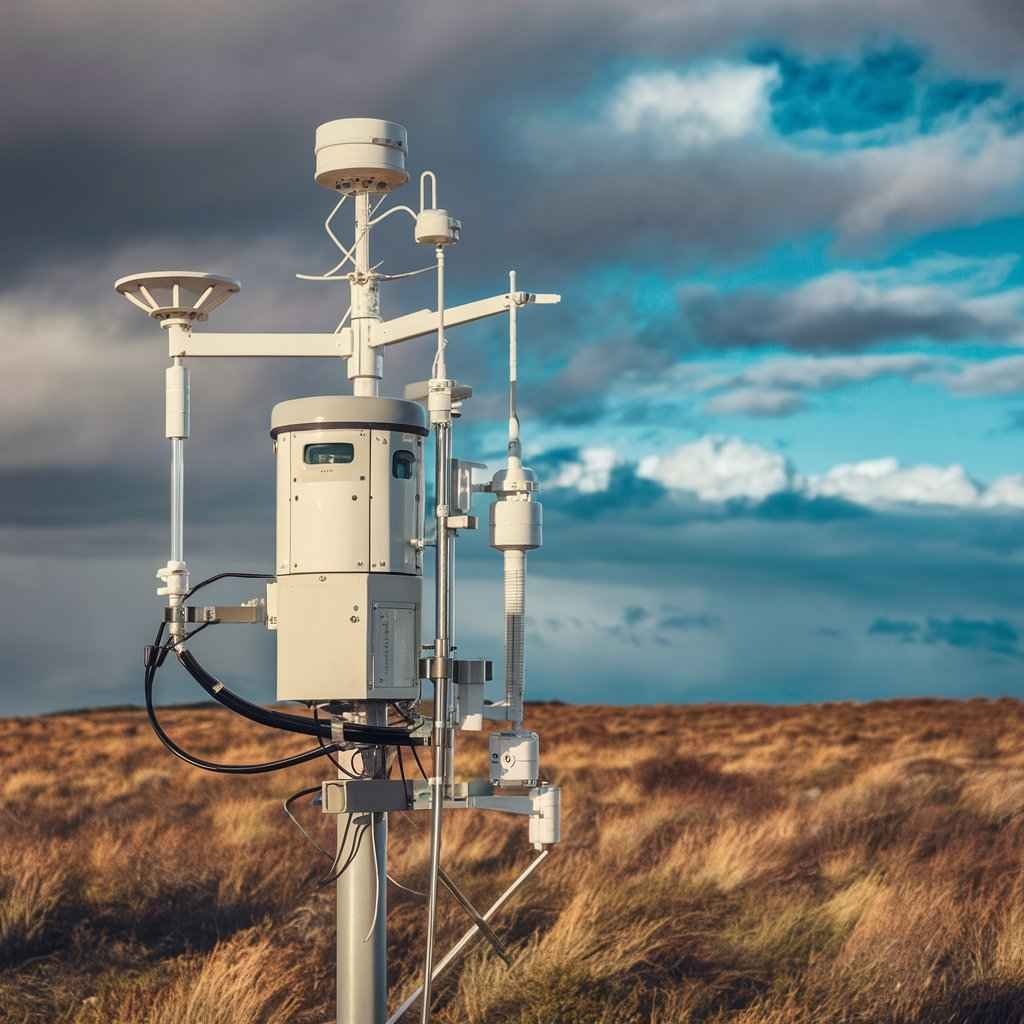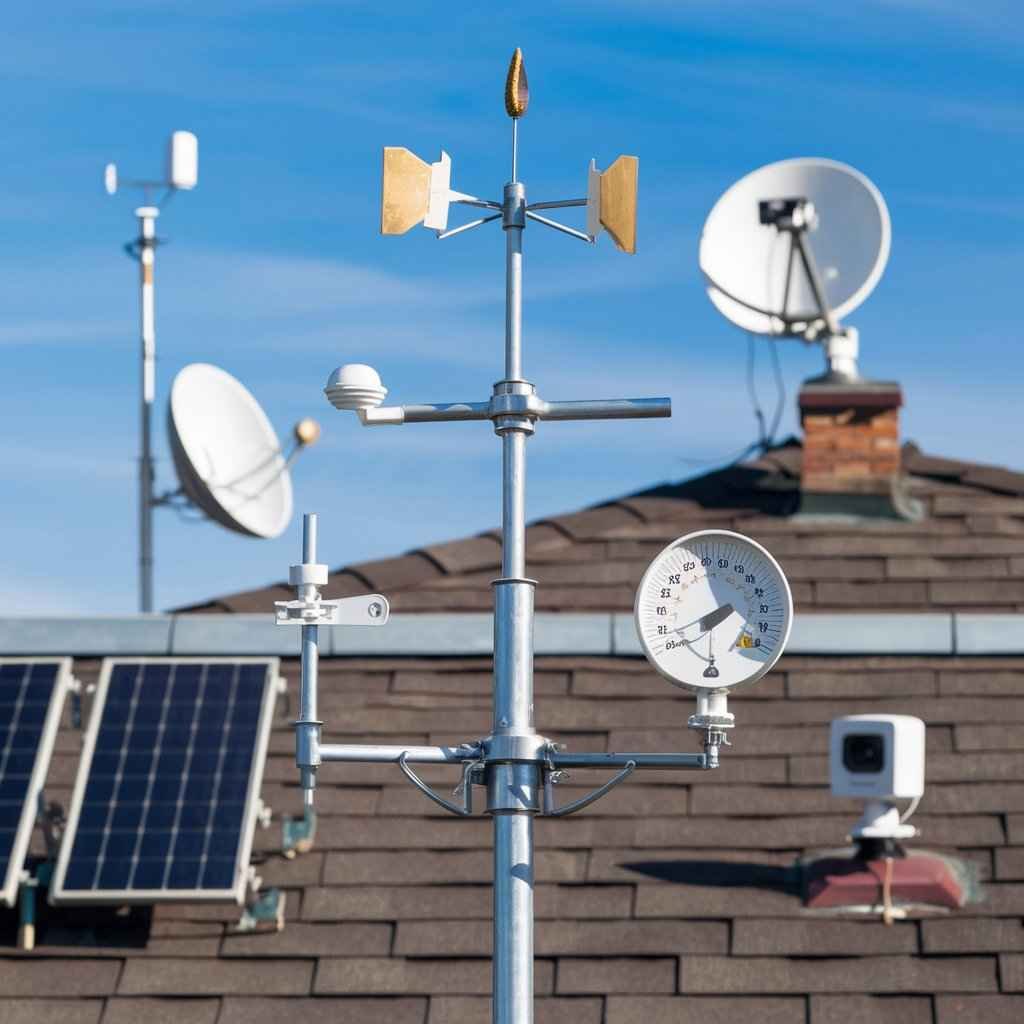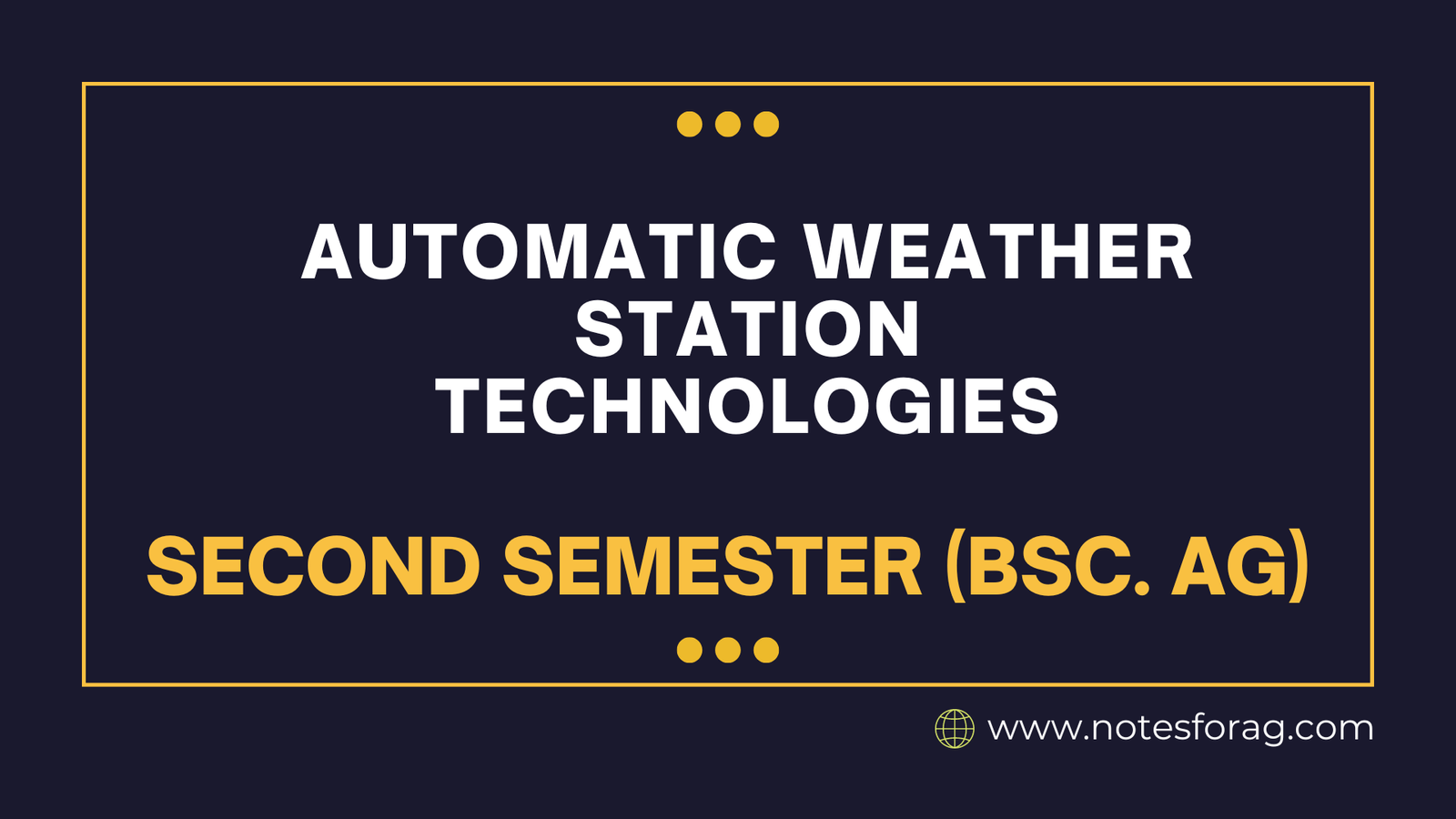Automatic weather stations (AWS) are modern devices that monitor and record meteorological data in real time. AWS is outfitted with a variety of sensors, data loggers, and communication modules to provide precise measurements of essential meteorological factors such as temperature, humidity, wind speed, and precipitation. These stations function independently, often powered by solar panels, and send data via cellular, satellite, or internet connections. AWS play an important role in weather forecasting, climate research, and agriculture management, improving decision-making and resource optimisation across multiple industries.
Table of Contents
Introduction to Automatic Weather Stations
Automatic Weather Stations (AWS) are advanced technical systems that monitor and record meteorological data automatically. Unlike traditional manual weather recording methods, which are time-consuming and prone to human mistake, AWS provides a more efficient and precise method of acquiring weather data. These systems have proven vital in a variety of disciplines, including meteorology, agriculture, and disaster management, thanks to their capacity to give real-time and exact meteorological data.

AWS’s evolution has been characterized by substantial technology advances. Initially, weather data collecting was mainly reliant on manual devices like thermometers, barometers, and anemometers, which necessitated regular human intervention. Over time, these manual approaches have been supplanted by automated systems capable of continuously monitoring numerous meteorological data without the need for constant human intervention. This change not only improves data accuracy, but also broadens the scope of weather monitoring to include rural and inaccessible places.
AWS normally consists of many major components that work together to collect and transmit meteorological data. Sensors, data loggers, and communication systems make up the core components. Sensors are the foundation of any AWS, detecting temperature, humidity, wind speed, wind direction, and precipitation. These sensors are extremely sensitive and calibrated to produce precise results.
Benefits of AWS
- Continuous Monitoring: AWS collects data continuously and in real time, whereas manual observations are sporadic and limited.
- Accuracy and consistency: Automated sensors minimize human error, resulting in more accurate and consistent data.
- Efficiency: AWS operates autonomously, requiring fewer staff and lowering operating costs.
- Timeliness: Real-time data transmission enables fast analysis and decision-making, which is critical for weather-sensitive operations such as agriculture.
- Remote Accessibility: Data from AWS can be accessed remotely, allowing for weather monitoring in inaccessible or hazardous regions.
Limitations of AWS
- Initial costs: AWS installation might be expensive due to equipment and setup costs.
- Maintenance: Regular maintenance and calibration are required to ensure accuracy and performance, which might lead to additional costs.
- Technical issues: AWS may experience technical issues or data transmission outages, necessitating prompt response.
Components of Automatic Weather Stations

1. Data Logger:
- Function: Data is collected, stored, and processed from a variety of sensors.
- Components: Microprocessor, memory, and sensor interfaces.
- Features: Data aggregation, threshold detection, event logging, and timestamping.
2. Data Communication:
- Types: GSM/GPRS modules, satellite communication, RF modules, Wi-Fi, and Ethernet.
- Purpose: Send data to central servers or cloud platforms for processing and storage.
- Benefits: Provides remote monitoring and real-time data access.
3. Power Supply:
- Primary sources: Solar panels with rechargeable batteries.
- Alternative sources: Wind turbines and mains electricity.
- Importance: Ensures continued operation, particularly at remote places.
4) Sensors:
- Types: Several sensors measure different meteorological factors.
- Integration: Connected to the data logger for data gathering and transfer.
Sensors for Measurement of Meteorological Variables for Agriculture
1. Temperature Sensors:
- Types: Thermistors are platinum resistance thermometers (PRTs).
- Working Principle: Temperature is measured by the change in electrical resistance with temperature.
2. Humidity Sensors:
- Types: Capacitive and resistive.
- Working Principle: Detect moisture-induced changes in electrical characteristics to determine relative humidity.
3. Anemometers:
- Types: Cup, vane, and ultrasound.
- Working Principle: Cup and vane anemometers measure wind speed and direction mechanically, whereas ultrasonic anemometers detect wind velocity using sound waves.
4. Barometer:
- Types: Strain gauge, capacitive, and vibrating wire.
- Working Principle: Measure atmospheric pressure using the deformation of a sensing device.
5. Rain gauges:
- Types: Tipping bucket, weighing, and optical.
- Working Principle: Precipitation is measured with tipping bucket rain gauges, weighing gauges, and optical gauges, which employ laser beams to assess rain intensity.
6. Solar radiation sensors:
- Type: Pyranometers.
- Working Principle: Use a thermopile sensor to measure the total sun radiation received on a horizontal surface.
7. Soil Moisture Sensors:
- Types: Capacitance, impedance, neutron probe.
- Working Principle: Volumetric water content in soil can be determined using changes in the dielectric constant or neutron scattering.
8. Soil temperature sensors:
- Types: Thermocouples and Thermistors.
- Working Principle: Measure soil temperature at different depths using electrical resistance changes as a function of temperature.
Automatic weather stations (AWS) offer various advantages over manual observations, such as continuous monitoring, increased accuracy, efficiency, and remote access. AWS’s essential components—data loggers, data connection systems, power supply, and sensors—all work together to capture and send meteorological data in real time. These sensors measure a variety of meteorological factors important for agriculture, and each operates on unique principles to ensure precise and trustworthy data collecting. Agricultural methods can be enhanced with AWS technology, increasing productivity and sustainability in the face of shifting weather conditions.
Frequently Asked Question(FAQ)
What is an Automatic Weather Station (AWS)?
An Automated Weather Station (AWS) is a system that monitors and records meteorological data using a variety of sensors. It collects real-time data on temperature, humidity, wind speed, precipitation, and sun radiation and sends it to central computers for analysis.
What are the main components of an AWS?
The main components include: Sensors, Data Logger, Data Communications and Power Supply.
Related Articles

